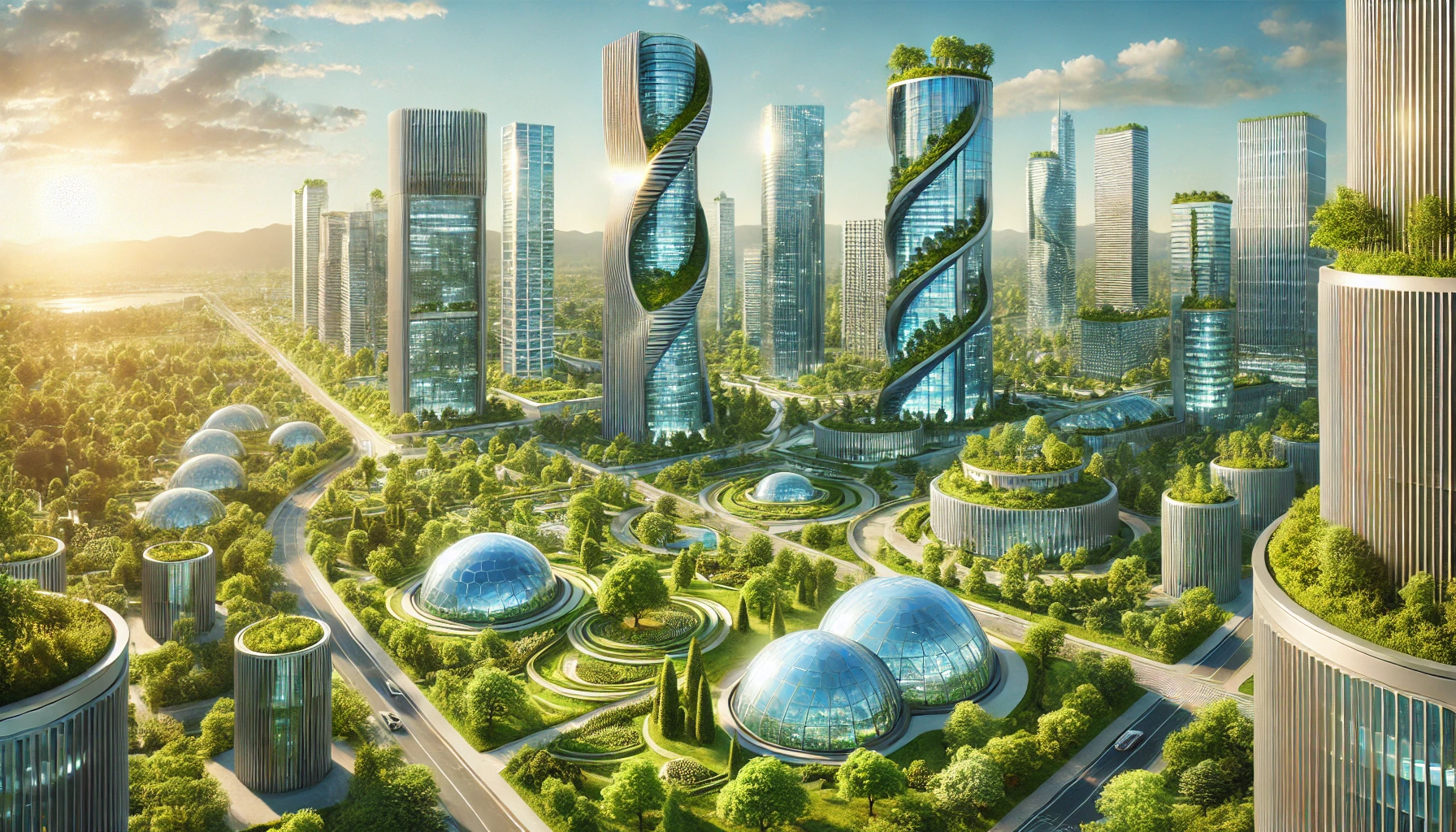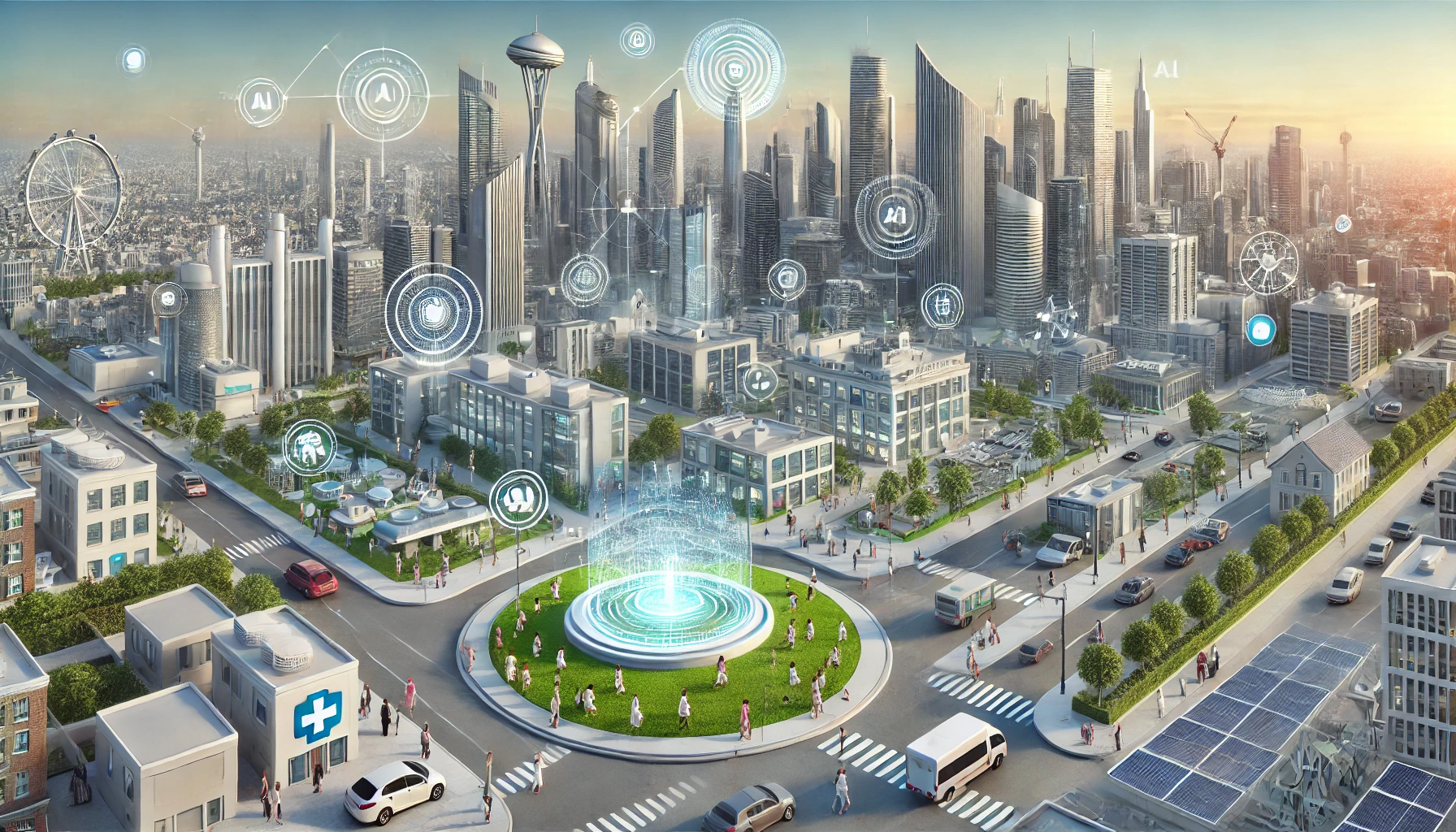Key Takeaways
- AI predicts climate patterns and optimizes resources to reduce emissions.
- AI aids in climate change mitigation through better data analysis and response strategies.
- AI enhances resource management, promoting sustainable practices across industries.
Leveraging AI
Artificial intelligence (AI) is revolutionizing various fields, and its potential in promoting environmental sustainability is becoming increasingly evident.
AI can help predict climate patterns, optimize resource use, and develop solutions for reducing waste and emissions, addressing environmental challenges.
By leveraging AI, industries can make better decisions that lead to a greener planet.
One significant area where AI shows promise is in climate change mitigation and adaptation.
By analyzing large datasets, AI can identify trends and suggest strategies to combat climate change.
For instance, AI-driven models can enhance weather prediction accuracy, assist in disaster response, and improve energy efficiency, thereby reducing carbon footprints.
Another compelling application of AI is in resource management.
From agriculture to water conservation, AI technologies can optimize the use of resources, ensuring sustainable practices.
Innovations such as automated logistics and decision support systems are already showing benefits in efficiency and sustainability, making AI a powerful tool for achieving environmental goals.
Understanding AI and Its Role in Environmental Sustainability
Artificial intelligence (AI) can help tackle various environmental challenges. AI technology, however, also has an environmental impact, including electronic waste and carbon emissions, which necessitates sustainable data center investments. From decision-making to implementing sustainable practices, AI technologies play a crucial role.
Fundamentals of AI
AI refers to computer systems that mimic human intelligence. These systems can perform tasks like decision-making, pattern recognition, and language processing.
AI includes various technologies such as machine learning, neural networks, and deep learning.
Neural networks allow systems to learn from data. Machine learning uses algorithms to identify patterns. Deep learning, a subset of machine learning, involves layered neural networks for complex tasks.
Natural language processing (NLP) helps in interpreting and responding to human language, which can be useful in understanding ecological data and trends.
AI in Decision-Making for Sustainability
AI enhances decision-making by providing data-driven insights.
It can optimize resource use, lower emissions, and monitor ecosystems.
AI systems analyze large datasets quickly, revealing hidden patterns and trends.
These insights help in making better decisions for environmental policies and practices.
Machine learning aids in predicting outcomes of different sustainability strategies.
Deep learning models can forecast climate changes by analyzing historical data, while natural language processing (NLP) can help understand research papers and reports.
AI also supports adaptive management by offering real-time data and predictive analytics.
Key AI Technologies for Sustainability
Several AI technologies are crucial for sustainability efforts.
Neural networks and deep learning models are used to analyze climate data and predict environmental changes.
Pattern recognition helps in identifying trends in pollution levels and wildlife populations.
AI-driven drones and robots help in monitoring and managing natural resources.
NLP aids in extracting meaningful information from research papers and reports.
Machine learning algorithms optimize energy use in smart grids and improve waste management systems.
Computational power allows for processing vast amounts of ecological data, enabling precise and timely interventions.
These technologies collectively contribute to a more sustainable future.
AI for Climate Change Mitigation and Adaptation
AI is becoming a powerful tool for tackling environmental challenges by improving climate action efforts, enhancing predictive analysis for climate-related challenges, and helping to reduce carbon footprints.
AI-Driven Climate Action
Artificial intelligence can significantly support climate action initiatives.
By analyzing vast amounts of environmental data, AI helps identify patterns and trends that inform policymakers and stakeholders.
Machine learning algorithms, for example, can help in the optimization of renewable energy sources, ensuring efficient distribution and storage of solar and wind power.
AI also assists in monitoring deforestation and tracking illegal logging activities, which are crucial for maintaining global carbon sinks.
AI technologies can also facilitate precision agriculture.
This ensures that water usage is efficient and fertilizers are applied optimally, reducing greenhouse gas emissions from farming practices.
Predictive Analysis for Climate Challenges
AI-driven predictive analysis plays a critical role in anticipating climate-related events.
Through analyzing historical climate data, AI models forecast extreme weather events such as hurricanes, floods, and droughts with greater accuracy.
This predictive capability enables communities and governments to prepare better, minimizing loss of life and property.
For instance, AI can predict areas of potential flooding, allowing for timely evacuations and the construction of defensive infrastructure.
AI can also forecast long-term climate changes, helping industries adapt and adopt sustainable practices.
This ensures that energy consumption is predicted and optimized, leading to reduced reliance on fossil fuels and lower carbon emissions.
Utilizing AI for Carbon Footprint Reduction
AI is instrumental in strategies to reduce carbon footprints.
By optimizing energy consumption in buildings and industries, AI helps cut down on excessive use of energy.
For example, smart grids powered by AI can balance energy loads and integrate renewable energy sources more effectively.
AI can track and manage carbon dioxide emissions from various sectors, identifying key areas for emissions reduction.
This is essential for industries looking to adhere to stricter environmental regulations.
Additionally, AI-driven transportation systems can optimize routes, reduce fuel consumption, and promote the use of electric and hybrid vehicles.
This results in fewer emissions and a smaller environmental impact overall.
AI Innovations in Resource Management
AI is transforming the way we manage natural resources by optimizing energy consumption, conserving water, and preserving biodiversity. These innovations are powerful tools for achieving sustainability goals.
Smart Energy Systems
Smart energy systems use AI to optimize energy consumption and reduce waste.
AI algorithms analyze real-time data from sensors and smart grids to balance supply and demand efficiently.
For example, AI can predict peak energy usage times and automatically adjust the distribution. This reduces energy waste and lowers costs.
Additionally, AI-driven systems can integrate renewable energy sources like solar and wind, ensuring a stable and sustainable energy supply.
By improving energy efficiency, smart energy systems contribute to environmental sustainability.
Companies and governments are increasingly investing in these technologies to reduce their carbon footprint.
Water and Biodiversity Conservation
AI plays a critical role in water and biodiversity conservation.
In water management, AI helps detect leaks, predict water demand, and optimize distribution networks. This reduces water waste and ensures a reliable supply.
AI also aids in biodiversity conservation by monitoring ecosystems and identifying endangered species.
For instance, AI-powered drones can survey large areas to track wildlife populations. Machine learning algorithms analyze this data to identify threats and suggest conservation strategies.
These technologies are essential for protecting natural resources and ensuring the survival of diverse species.
AI enhances the ability to manage water and biodiversity sustainably.
Sustainable Resource Optimization
AI optimizes resource use in various industries to promote sustainability.
In agriculture, AI-driven systems monitor soil health, predict crop yields, and optimize irrigation. This reduces water usage and increases food production efficiency.
In manufacturing, AI helps minimize waste by predicting equipment failures and optimizing supply chains.
AI also supports urban planning by analyzing data on traffic, pollution, and energy use. Cities can use this information to design more sustainable infrastructures.
By integrating AI into resource management practices, industries can achieve significant sustainability improvements.
This not only conserves resources but also supports long-term environmental goals.
Ethical Implications and Sustainable AI Practices
Ethical AI practices focus on minimizing biases and ensuring transparency and accountability in the development and deployment of AI systems. Sustainable AI emphasizes the importance of reducing the environmental impact of AI technologies while achieving sustainable development goals.
Developing Ethical AI Frameworks
To develop ethical AI frameworks, it is crucial to integrate AI ethics into every stage of the AI lifecycle.
This includes designing, developing, and deploying intelligent systems that align with ethical principles.
Frameworks should address ethical issues like privacy, data security, and ensuring that AI systems do not exacerbate existing inequities.
By adopting these frameworks, developers can create AI systems that are not only effective but also fair and just.
Aligning AI practices with the sustainable development goals will aid in creating a positive impact on society while minimizing negative consequences.
Transparency and Accountability
Transparency in AI involves making the datasets, algorithms, and decision-making processes accessible and understandable to stakeholders.
Clear documentation and open communication can help stakeholders trust AI systems and hold developers accountable.
Accountability means responsibility for the actions and decisions made by AI systems.
Ensuring accountability requires setting up mechanisms to trace and audit AI decisions.
This can involve tracking the data sources and algorithm changes and having clear lines of responsibility for AI outcomes.
Providing transparency and accountability ensures that AI developers remain responsible and that AI systems are used ethically and effectively.
Biases and Fairness in AI
Addressing biases in AI is crucial for promoting fairness.
Biases in AI can arise from skewed data, flawed assumptions, or algorithmic limitations.
It is vital to regularly audit and refine datasets to avoid perpetuating inequalities.
Developers should use diversity in data samples and thorough testing to identify and mitigate biases.
Implementing fairness as a core principle in AI development helps create more inclusive and balanced AI technologies.
By tackling biases, AI systems become more reliable and equitable, thereby supporting ethical AI practices and contributing to sustainable AI.
For more detailed reading on these topics, you can refer to articles such as those on Green AI research and ethical certification for AI.
Impact of AI on Society and the Economy
AI has significantly transformed various sectors, leading to economic growth, improved healthcare, and the development of smart cities. AI's potential contribution to the global economy is estimated to be $5.2 trillion USD by 2030, creating 38.2 million new jobs and addressing sustainability and environmental challenges. These advancements also bring challenges that society must address.
Economic Advancements through AI
AI has driven economic growth by enabling automation and productivity improvements.
It automates repetitive tasks, freeing workers to focus on more complex activities. This shift can lead to higher efficiency and lower operational costs.
Businesses benefit from data-driven insights that optimize processes and enhance decision-making.
Machine learning and predictive analytics help companies understand market trends and consumer behavior.
As a result, AI fosters innovation and creates new business opportunities, contributing to overall economic development. Retail, finance, and manufacturing sectors particularly benefit from AI advancements.
AI Influence on Healthcare and Smart Cities
AI revolutionizes healthcare through improved diagnostics, personalized treatment plans, and better patient management.
Machine learning algorithms help in early disease detection by analyzing medical images and patient data. As a result, healthcare providers can offer more effective treatments and improve patient outcomes.
In smart cities, AI enhances urban living by optimizing traffic flows, managing energy consumption, and improving public safety.
AI-driven systems predict and mitigate issues like congestion and pollution. This contributes to more efficient city management and better quality of life for residents.
Challenges and the Future of AI in Society
Despite the benefits, AI poses several challenges for society.
Job displacement due to automation is a major concern, as many roles traditionally performed by humans are now executed by machines. This paradigm shift requires a workforce skilled in AI technologies and adaptation to new job roles.
Ethical considerations and data privacy also present significant issues. There is a need for regulations to ensure AI use is fair and transparent.
Additionally, the environmental impact of AI, including energy consumption and contribution to global warming, must be addressed to ensure sustainable development.
Frequently Asked Questions
AI plays a crucial role in promoting environmental sustainability by optimizing resource use, advancing development goals, mitigating potential negatives, and managing data effectively.
How can AI contribute to the advancement of environmental conservation efforts?
AI can help monitor natural habitats using drones and satellite imagery, detecting illegal activities like poaching and deforestation. Machine learning models can predict environmental changes, allowing authorities to take preventive actions.
In what ways does AI help advance sustainable development goals?
AI aids in achieving sustainability goals by optimizing energy consumption, improving water management, and enhancing agricultural productivity through precision farming. AI-driven analytics can also help track and report on sustainability metrics efficiently.
What are the potential negative impacts of AI on the environment?
AI systems require significant computational power, which leads to high energy consumption. This can result in increased carbon emissions unless renewable energy sources are used. The production and disposal of AI hardware also contribute to environmental degradation.
How are AI technologies being utilized in environmental sustainability projects?
AI is used in projects like smart grids to optimize energy distribution and reduce waste. It supports climate modeling to predict and mitigate the impact of climate change. AI also helps in waste management by improving recycling processes and reducing landfill use.
What role does artificial intelligence play in the management and analysis of environmental data?
AI algorithms analyze vast amounts of environmental data to identify patterns and trends. This helps in real-time monitoring of air and water quality, tracking biodiversity, and predicting natural disasters. Data-driven insights support policymakers in making informed decisions.
Can AI offer solutions to reduce environmental footprints in the digital realm such as the metaverse?
AI can optimize server efficiency and cooling in data centers, reducing energy consumption. Virtual simulations and AI-driven innovation can create more energy-efficient virtual environments, minimizing the environmental footprint of digital platforms like the metaverse.










